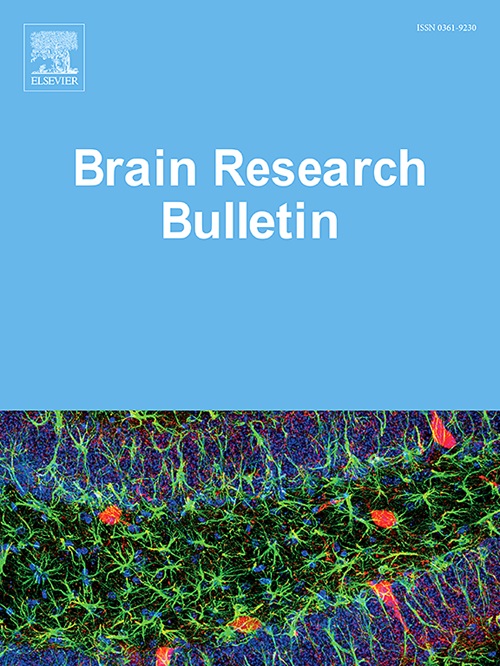Structure and dynamics analysis of brain functional hypernetworks based on the null models
IF 3.5
3区 医学
Q2 NEUROSCIENCES
引用次数: 0
Abstract
Brain functional hypernetworks that can characterize the complex and multivariate interactions among multiple brain regions have been widely used in the diagnosis and prediction of brain diseases. However, there are few studies on the structure and dynamics of brain functional hypernetworks. Such studies can help to explore how the important functional features of brain functional hypernetworks characterize the working and pathological mechanisms of the human brain. Therefore, this article introduces the hypernetwork null model to analyze the dependencies between the features of interest. Specifically, first, based on the original brain functional hypernetwork, this article proposed the optimized hyper dK-series algorithm with hyperedges to construct null models that preserved the different node attributes and hyperedge attributes of the original brain functional hypernetwork, respectively. Next, based on the original hypernetwork model and the null model, multiple node attributes and hyperedge attributes were respectively introduced. Then, the level of similarity and correlation between the topological attributes of the original brain functional hypernetwork and the topological attributes of the brain functional hypernetwork null model were calculated to analyze the dependencies between the features of interest. The results showed that there were differences in the level of dependence between the features of interest. Node degree is the main dependency attribute for multiple metrics. Hyperedge degree, node degree-dependent redundancy coefficient, and hyperedge degree-dependent redundancy coefficient are partial dependency attributes for some metrics. The dependency attributes and level of dependency are the same for the hypernetwork clustering coefficients—HCC2 and HCC3. This indicates that the node degree is redundant with respect to other attributes, while the hyperedge degree, node degree-dependent redundancy coefficient, and hyperedge degree-dependent redundancy coefficient perhaps contain other topology information. In addition, there is redundancy between HCC2 and HCC3. Therefore, the effects of these redundant attributes need to be considered when performing network analysis.
基于零模型的脑功能超网络结构与动力学分析。
脑功能超网络能够表征脑多区域间复杂、多元的相互作用,已广泛应用于脑疾病的诊断和预测。然而,对脑功能超网络的结构和动力学研究较少。这些研究有助于探索脑功能超网络的重要功能特征如何表征人类大脑的工作和病理机制。因此,本文引入超网络空模型来分析感兴趣的特征之间的依赖关系。具体而言,首先,本文在原始脑功能超网络的基础上,提出了基于超边的优化超dK-series算法,构建分别保留原始脑功能超网络不同节点属性和超边属性的空模型。其次,在原有超网络模型和空模型的基础上,分别引入了多节点属性和超边缘属性。然后,计算原始脑功能超网络拓扑属性与脑功能超网络零模型拓扑属性之间的相似度和相关度,分析感兴趣特征之间的依赖关系。结果表明,感兴趣特征之间的依赖程度存在差异。节点度是多个度量的主要依赖属性。超边缘度、节点度相关冗余系数和超边缘度相关冗余系数是某些指标的部分依赖属性。超网络聚类系数hcc2和HCC3的依赖属性和依赖程度相同。这表明节点度相对于其他属性是冗余的,而超边缘度、与节点度相关的冗余系数和与超边缘度相关的冗余系数可能包含其他拓扑信息。此外,HCC2和HCC3之间存在冗余。因此,在进行网络分析时,需要考虑这些冗余属性的影响。
本文章由计算机程序翻译,如有差异,请以英文原文为准。
求助全文
约1分钟内获得全文
求助全文
来源期刊

Brain Research Bulletin
医学-神经科学
CiteScore
6.90
自引率
2.60%
发文量
253
审稿时长
67 days
期刊介绍:
The Brain Research Bulletin (BRB) aims to publish novel work that advances our knowledge of molecular and cellular mechanisms that underlie neural network properties associated with behavior, cognition and other brain functions during neurodevelopment and in the adult. Although clinical research is out of the Journal''s scope, the BRB also aims to publish translation research that provides insight into biological mechanisms and processes associated with neurodegeneration mechanisms, neurological diseases and neuropsychiatric disorders. The Journal is especially interested in research using novel methodologies, such as optogenetics, multielectrode array recordings and life imaging in wild-type and genetically-modified animal models, with the goal to advance our understanding of how neurons, glia and networks function in vivo.
 求助内容:
求助内容: 应助结果提醒方式:
应助结果提醒方式:


